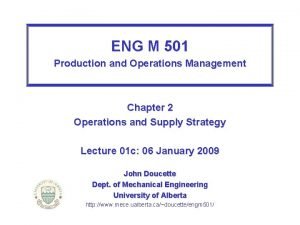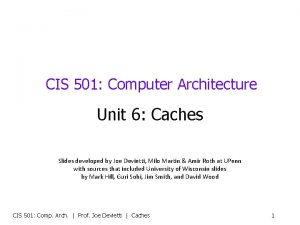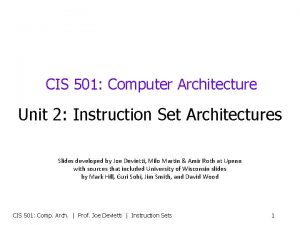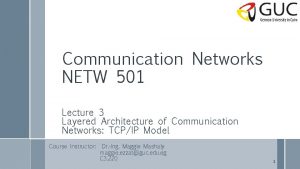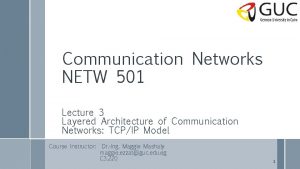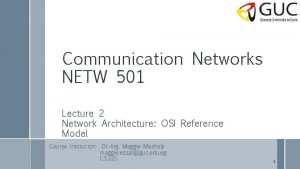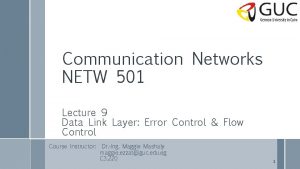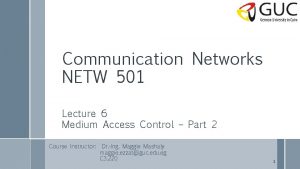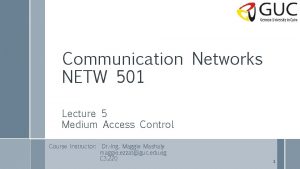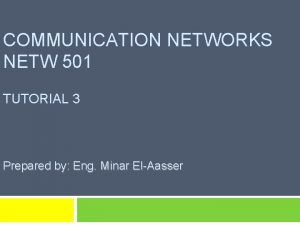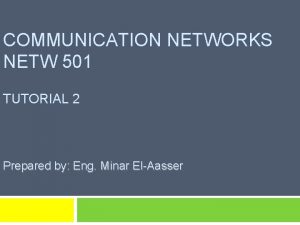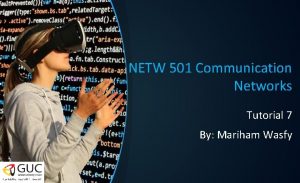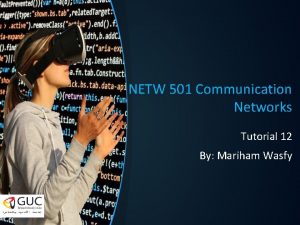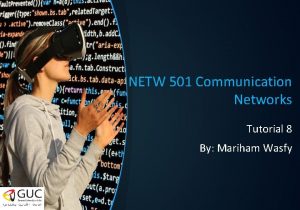Communication Networks NETW 501 Lecture 1 Course Overview














- Slides: 14

Communication Networks NETW 501 Lecture 1 Course Overview & Introduction Course Instructor: Dr. -Ing. Maggie Mashaly maggie. ezzat@guc. edu. eg C 3. 220 1

Text Book and References • Text Book: “Communications Networks 2 nd Edition”, A. Leon-Garcia, and I. Widjaja, Mc. Graw Hill, 2003 • Reference Books: “Computer Networking: A Top-Down Approach Featuring the Internet 3 rd Edition”, J. F. Kurose, and K. W. Ross, Addison Wesley, 2005 “Computer Networks 4 th Edition”, A. Tanenbaum, Prentice Hall, 2002 2

Course Assessment Type Description Weight Quizzes Best 2 out of 3 15% Assignments Packet Tracer (5%) Socket Programming (5%) 10% Mid-term Exam Theoretical 30% Final Exam Theoretical 45% 3

Communication Networks: The Revolution! Wi. Fi Networks Cable Networks Home Networks DSL Networks Optical Networks Body Area Networks System/Network on Chip Sensor Networks Data Centers and Cloud Computing 4

Communication Networks: Applications Telecommunications Business Inter vehicle communication Health Mobile Applications Industrial Process Control Agriculture & Irrigation 5

Communication Networks: Applications 6

What will you learn from this course? • Fundamental Concepts of Communication Networks • Basics of Design and Architecture of Communication Networks • Different Interconnectivity Approaches of Communication Networks • Role of Software & Hardware in Communication Networks • Different Examples of Existing Communication Networks 7

Skills you need for this Course 1. A Good Memory – Around 40% of the midterm/final exams is theoretical – If you understand the concepts well, memorizing will be quite easy 2. Problem Solving – Practice problems to digest theoretical concepts – Some problems require some understanding about the basics of probability 8

Communication Networks NETW 501 Lecture 1 Layered Architecture of Communication Networks 9

Comm. Networks: First Questions • What is a Communication Network? – A System connecting different devices such as Phones, Mobiles, PCs, Printers, and Disk Drives to provide a certain Service • Why do we need Communication Networks? – Need to communicate and share information among different devices – Direct connectivity between each and every device is not feasible – Direct connectivity between each and every device is not actually necessary 10

The Need for Communication Standards • Computers have different architectures, understand different languages, store data in different formats, and communicate at different rates • Getting everybody to agree on a particular standard has not been easy… • Defacto Standards: Ø Standards that exist by the virtue of wide spread use Ø Vendors know that producing products consistent with them will have a large market • Standards adopted by Agencies: Ø Write a proposal and submit it to an agency for consideration Ø If the proposal has merit and wide spread acceptance, the agency will make suggestions and send it back to the originators for modifications Ø After several rounds of suggestions and modifications the proposal will be adopted or refused 11

OSI Reference Model • Describes a seven-layer abstract reference model for a network architecture • Purpose of the reference model was to provide a framework for the development of protocols • Open System Interconnect (OSI) – Developed by ISO (International Organization for Standardization) – Open System: A set of protocols that would allow any two different computers to communicate regardless of their underlying architecture 12

The Concept of Layering 13

References • NETW 707 Lectures slides by A. Prof. Tallal El-Shabrawy • “Communication Networks 2 nd Edition”, A. Leon-Garcia and I. Widjaja, Mc. Graw Hill, 2013 14










